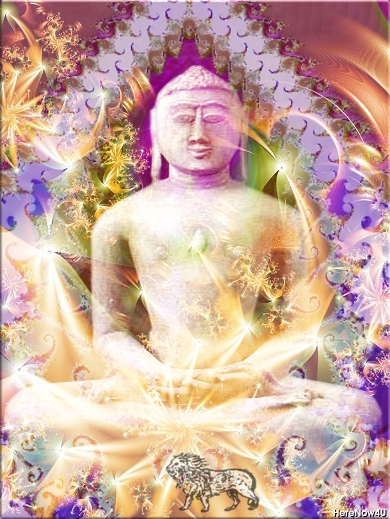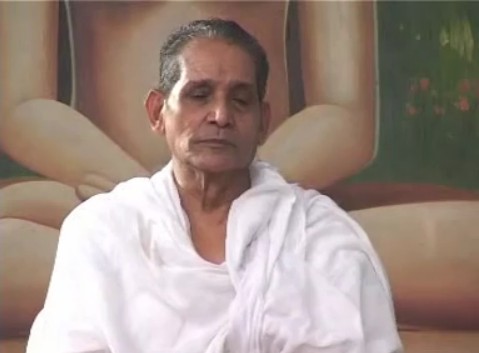Meditation was an integral part of Lord Mahavira's life.
The Lord meditated deeply, both during his life as a householder and also during his life before enlightenment.
Meditation and Kayotsarga had been his tools for self-purification and realisation.
In this age of tension and stress, His meditation technique is beneficial to lead a happy and contented life.

The aim of Lord Mahavira's meditation is:
- To destroy the unhappy latent tendencies accumulated in the past, to realise the real self.
- To realise the truth about the soul and things around it. During his ascetic life, Lord Mahavir had meditated in different ways:
• Meditation by fixing the gaze for hours on an oblique wall (for concentration of mind) and also for acquiring high levels of magnetism in the eyes. - Meditation in secluded places far away from inhabited spots.
- Adoption of various steady postures in meditation. He meditated in the higher loka (universe) and in the downward direction (lower) and in the transverse direction (the transverse loka), making them objects for meditation.
- Meditating mostly in standing posture. Even then, the Lord Mahavir used to have full awareness and deep relaxation (Kayotsarga).
Meditating in the open without clothes and shelter, even as others shivered in the winter. - Being ceaselessly conscious at every moment of the day and night. Total vigilance in the sixth step, and Samadhi, the seventh step of the meditative path.
- Practicing meditation, both with the support of an object and without any support of any object.
- Usage of different objects for his meditation sessions. He would change the targets of his attention.

Following were the targets on which he had meditated:
- The Karmas moving upward, downward and in a transverse direction.
- Bondage, the cause of bondage and its consequences.
- Salvation, its cause and its bliss.
- The head, the navel and the big toe.
- Matter, its characteristic and modes (its changing conditions).
- The origin, permanence and transitory nature of Matter.
- The gross world and the cosmos.
- Subtle objects like the molecular structure.
- The soul, by intuition.
- Practice of contemplations (Bhawanas) during practice of meditation. The main subjects were: Loneliness transitoriness and absence of protection, etc.
- Concentration on the body for a long stretch of time; he could change it on the mental and vocal level. He could change his meditations from matter to mode and from word to silence.
For most of his acetic life, Mahavira was in deep silence as he had taken a vow for the same. He was not subject to the urge to speak. He spoke wisely and sparingly. If somebody questioned him, he answered consciously. The rest of the time he avoided contacts and communication.
Now the question arises on what his method of meditation actually was?
He meditated, but how he did it, is not known.
So this question had been asked to his Holiness Acharya Tulsi.
He directed Muni Nathmal Ji (Now Acharya Mahaprajna) to find out the methods and technique that Lord Mahavira used during meditation.
Both the Acharyas worked on it and finally launched Preksha Meditation, a Jain meditation system based on the above practice of Lord Mahavira.
 Swami Dharmananda
Swami Dharmananda

